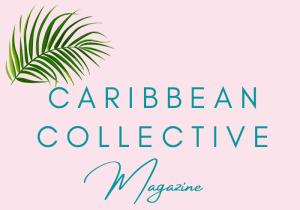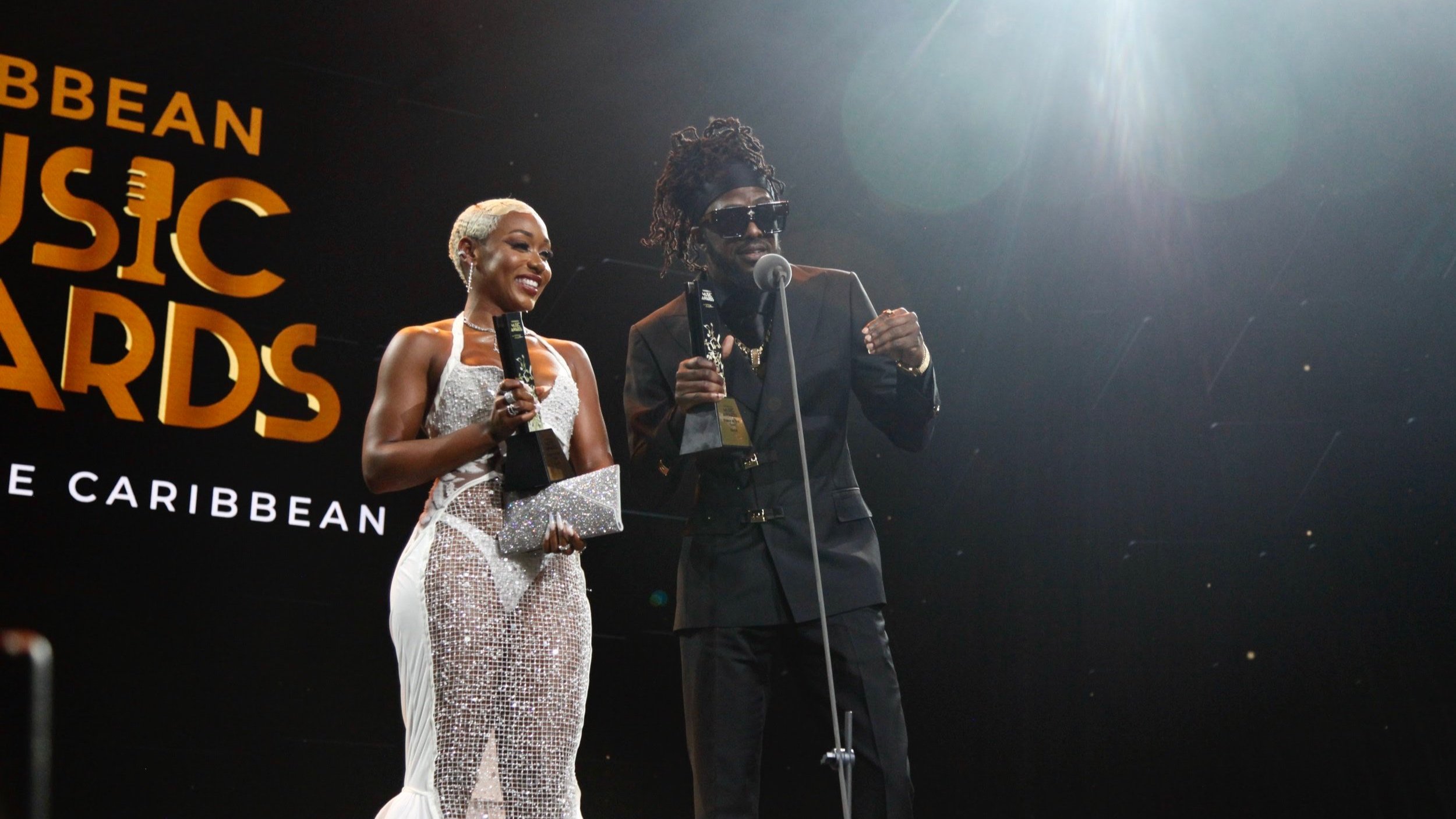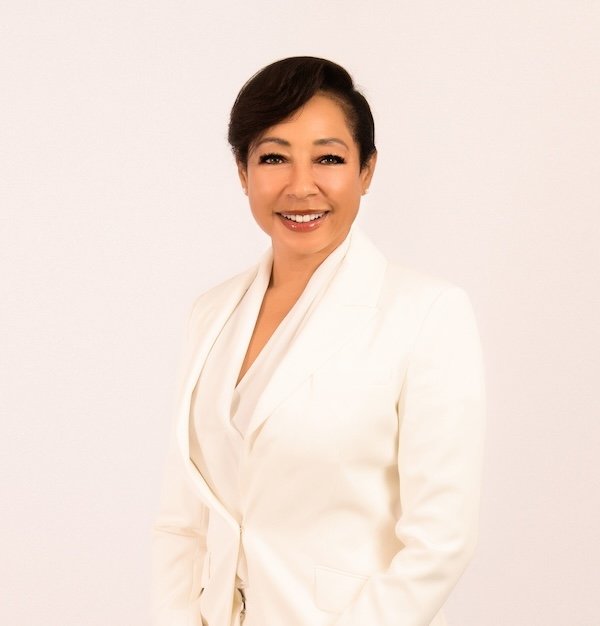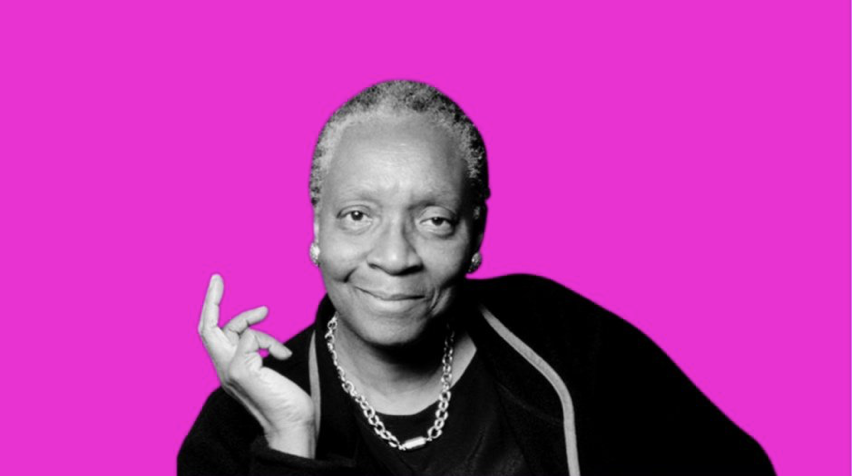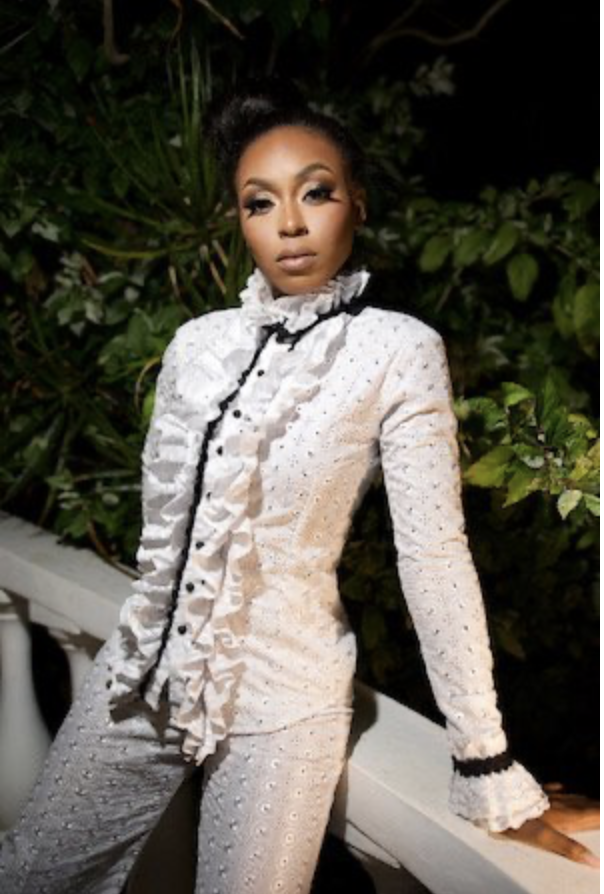National Geographic’s Dr. Diva Amon on Trinidad, Ocean Life and Women in Science
Photo courtesy of Dr. Diva Amon
written by Shanida Carter
Dr. Diva Amon says she didn’t get her first name by some profound or divine revelation, though her name means celestial beings in Hindi. Her mother had a perfume bottle called Diva on the side table before she gave birth. She loved the perfume and the name and went with it. Turns out the name was indeed profound and divine now that the marine biologist studies beings not known to most humans.
[Additional Read: Nadia Huggins on Inspiration and Her Powerful Connection to St. Vincent]
The name certainly suits Dr. Diva who can now be seen on Disney+ taking a deep-sea dive with Will Smith on his “Welcome to Earth” National Geographic series. The series features Smith traveling around the world exploring the planet’s greatest wonders with elite explorers. The six-part series is eye-opening, breathtaking, educational, and simply fun to watch. In episode 2, Dr. Diva calmly submerged 3,300 feet underwater with the fear-ridden Hollywood heavyweight. Somewhere in between, she mentions that she is a native of Trinidad. Like the reaction of others I’ve seen on social media, I jumped up off my couch with pride next to my 10-year-old daughter. I spoke over Zoom with the globe-trotting scientist while she sat comfortably on her couch, with her mum nearby, in her native Trinidad.
Q&A
So tell me about your Trinidadian roots. Where are your people from?
My dad is British, so we're just going to park him, but my mom is Trini through and through. She grew up in Gasparillo in south Trinidad. Now we live north in Maraval, but she's always been a south girl and her whole family for generations have been south people.
2. What do you love most about Trinidad?
It's so funny. I have so many friends that have been here their entire lives and they are just itching to go. I find you see that with so many Trinidadians —they're itching to leave. Perhaps it's because I do have the privilege of having left and coming back. Being geographically flexible for a lot of what I do now, I just feel so intrinsically like [Trinidad] is part of me and it’s everything. I just feel like we have this grit that is this hotbed of innovation and culture and produces phenomenal people from that grittiness.
When you combine that with the incredible nature that we have here —we have some of the highest biodiversity for an island. It's everything from the mountains to the rainforests to the reefs of Tobago. We're so blessed. And my mom and I were talking about this the other day, about how Trinidadians have this ability to catch kicks, right? No matter the situation, there's just always an old talk. We make light of any situation.
I could go on for hours about what I love about Trinidad. There's just this pride that so many Trinidadians feel, and that is a result of this incredible place that we call home.
3. Why did you become a marine biologist?
When I was growing up in Trinidad, we didn't have a MovieTowne. We didn't have all these things we have now, so my parents took me to the ocean a lot. We spent hours on the beach, snorkeling and out at sea. Those early experiences are what propelled a lot of where I am today. It wasn't until I went to university that I understood the true range of possibilities in marine biology.
Here in Trinidad and Tobago, we grew up with our coral reefs right there. Our mangroves are right there. Our seagrass beds are right there. Our seashore is there. All of those habitats are incredible and very important and very worthwhile to study, but that's kind of where our interest ends as a country, in the things we can see directly. Actually, there's so much more. Trinidad is more than 70 percent ocean and the majority of that is deep sea. It's actually far more than 70 percent. There's just no thought really given to that.
It began really as this pursuit of the love of the ocean, all these questions that I couldn't answer, and then it evolved into going to university and understanding that the biggest habitat, biggest ecosystem on our planet is the deep ocean and less than one percent of it has ever been seen by human eyes. That was really this light bulb moment of, ‘hey, like this is an opportunity to explore.’
I think we all grow up wanting to explore. It's something that many of us hold on to for our entire lives and here was the opportunity to do that for real. Since then, it's evolved again from just wanting to explore and understand to wanting to take what we learned and apply it to conservation because our planet is somewhere that it hasn't been for a very long time, somewhere that's not good. We almost have an obligation as scientists and people working in the environment to share what we learned so that we can put it towards managing it and stewarding it better.
4. With so much of Trinidad surrounded by water, why do you think it is that we don't have more Trinidadian marine scientists?
I think there's a variety of reasons. I am not a sociologist, so this is me just speculating. I think there are some real, deep-rooted historical reasons for that, given how Trinidad’s population came to be, slavery, indentureship. There’s a lot entrenched in us that we don't realize, especially when you compare Caribbean culture to, for instance, Pacific Island culture where the ocean is a fundamental part of culture.
Pacific islanders still have their indigenous and traditional way of life, and that's something that has been completely erased from the Caribbean. I think that is a large reason why, but I think there are other reasons.
When I was growing up, there wasn't a marine science course and UTT [The University of Trinidad and Tobago] didn't exist then, but now that's changing. There are marine science courses now, and so there are morepeople emerging equipped to be able to go into this field. The bottleneck in Trinidad and Tobago is that we have an amazing education system, but it's when you come out of that, right? It's that bottleneck going into a job. It’s not supported in the way it should be from the governments — anything environmental isn't really supported by the government.
I think another problem is underrepresentation. There is a real lack of female, or any role models really, in Trinidad that are from the environmental or science sector. That doesn't mean we don't have great people here. Of course, we do. Amazing experts of what they do, but it just means they haven't been given the prominence that perhaps would encourage others to follow in their footsteps. That's something that is changing but changing slowly. The other thing, and it's kind of related to political will, is that we just don't really have the access to the ocean, at least for what I do. Whether it's financial, whether it's institutional, we just don't have that access and support.
5. I imagine there are times when you're the only West Indian woman in the room, only woman of color in the room, maybe even the only woman in the room. How many West Indians have you come across in your field?
You're exactly right. In marine science in the Caribbean, there are incredible Caribbean people working in marine science. Many of them are women. I'd say that to a large degree. But those are for very specific topics like issues close to the shore. We're talking about the mangroves, the coral, the seagrass, fisheries and so on.
The NGO [non-governmental organization] that I co-founded and co-direct SpeSeas, has four directors who are women and they're all experts in particular areas. One is a turtle expert. One is a fisheries expert. One is a coral reef expert. There are so many women doing brilliant work in that field.
Another one is one of my most important mentors, Professor Judith Gobin from UWI [University of the West Indies]. She's the first professor of marine science in the Caribbean, so there are women breaking down boundaries in the Caribbean, but where that stops is that there aren't many working further offshore in the scientific field, like way out to sea or down in the depths. That's really where the difference is.
Again, that's for a variety of reasons, not knowing what's possible because of a lack of representation, because the deep ocean and open ocean science is so resource intensive that there are huge problems with diversity, equity and inclusion and just not having the equipment locally.
Also, it's quite an atypical life. So, there's a lot of reasons. It's a pretty isolating thing to often be the only nonwhite woman, often the only person from a developing country, whether male or female. Again, it's changing very slowly, and there is now this awareness that it needs to change. It's great to be part of that change.
6. What was the biggest hurdle going into marine biology?
There are different hurdles at different stages. One of the main ones is definitely the financial hurdle. When I was studying, I got a national scholarship for my undergraduate degree. Beyond that, there weren't really opportunities for funding, for instance a Ph.D or masters. It was really hard to navigate that financial hurdle. Because I wanted to do marine science, it meant I had to leave. There weren’t those courses in Trinidad.
Another one is that it requires you to move if you want to get experience, and so it required me to leave Trinidad to start. This is a burden and a blessing. It’s a privilege for sure, but it required me to leave Trinidad.
I've lived in the U.S. I've lived in the UK. In the last 10 years, I calculated it the other day, I've moved maybe six or seven times between those three countries. It is hard to leave loved ones. You make new bonds and then you leave them again and you miss things in people's lives that you love. That is not easy, even though it has really wonderful things that comes with it.
Photo courtesy of Dr. Diva Amon
8. What has the response been since you appeared on “Welcome to Earth?”
I think that’s probably been the most wonderful and humbling part of “Welcome to Earth.” All of the shoots were life-changing experiences. Again, this is not what I normally do so this was a big learning experience. All of the shoots were incredible, but even more incredible has been the response.
For the launch of the series, we were in L.A. and they played my episode “Descent Into Darkness” at the launch. Watching this audience of 300 people react to the episode… they reacted in all the ways that we had hoped. It was just so wonderful. Hearing similar things from people from all corners of the globe who have reached out by email or by social media to say how much they enjoyed it has been great.
The real pinnacle of that has been when Caribbean people or Trinidadian and Trinbagonian people reach out to say, ‘Oh my God. You cannot understand how proud it has made me to see a fellow Caribbean person in this space.’ I feel really emotional talking about it because so many of the messages have been so wonderful. Then there’s also ones who say, ‘Oh, my daughter was watching television. She was like, oh mom, she looks like you.’ It has made every single part of this more than worthwhile.
[Shanida Carter] Now, you got me tearing up too because my daughter and I watched your episode together... when we watched you, it just made it even more possible…Dr. Diva is doing it, and she took Will Smith to the bottom of the ocean.
9. What’s the most dangerous thing that happened while you’ve been in the water?
I have done a lot from going into the depths of the ocean kilometers deep to being two feet from sperm whales to being surrounded by 200 mantas, as you saw in “Welcome to Earth.”
There have been sharks, everything. There’s been a range of activities there that a lot of people would consider dangerous, but none of them felt particularly dangerous. Sure, things can go wrong, but also just behaving responsibly, especially when it comes to marine animals —not getting too close, etc.
Those two “Welcome to Earth” shoots, the one with the manta ray and the sperm whale, were the most adrenaline inducing ones, because there is this unknown factor. You just never know how something’s going to react to you. In that manta ray shoot, each of them has a 10-foot wingspan. Absolutely massive. Of course, they don’t have teeth. They’re not going to deliberately hurt you, and they’re going to do their best to avoid you. But I had maybe two or three collisions with them just because the water was so chaotic. I mean, you have 200 of these massive animals around you. They’re trying to feed, and that probably says I was too close.
Peripheral vision is blocked off because you’re in a mask that’s black. You’re just concentrating on getting down. You’re concentrating on holding your breath, getting the shot. And so, I just didn’t even realize there was one right there. Yeah, I got whacked in the face by a mantra, ripped the mask off so the mask flooded and sent me a bit into panic back to the surface to start over.
There was another one where it just hit my hands swimming and broke one of my rings and left me with a bit of a bruise. This is how strong they are. Again, it’s just because they’re massive animals. It just comes down to showing respect and giving things space and giving animals space and remembering that they are wild animals at the end of the day.
10. What advice do you have for girls and women who want to follow in your footsteps?
The first thing is it can be a very difficult road. Despite that, I would say do it. There’s really no time in history when we have needed conservationists, environmentalists, scientists more than we do now, when the planet has needed it more than we do now. Yes, it is a challenging road, but it is one that is equally or even more rewarding. The other thing I’d say, and this is only something that I’ve really learned later in my career, is not to compromise on the values that you hold dear. Stand by them. Ultimately preserving your integrity is, of course, going to require honesty. It’s, of course, going to be challenging at times, but it’s ultimately what is going to allow you to believe in your actions and live with joy and a peace of mind.
11. What should we all be doing to help save the ocean?
This is probably the hardest question that I get asked because I think when people ask that question, they want one thing…That is not the way we’re going to solve this. The only way to solve this is to do things that are really going to make a difference: sustained action in a variety of ways. That is everything from having discussions, volunteering your time, to policy makers in government enacting laws. We need to stopping buying stuff because ultimately that is what is creating so much of the environmental destruction, this insatiable need for things.
12. What is your ultimate goal?
The ultimate goal is to leave the planet in a better way than we found it, especially the deep ocean. The deep sea has a real PR problem. Not many people know about it. Not many people interact with it. Not many people care about it. Yet already unprecedented changes are happening, and that’s only set to increase in the future… It’s ultimately doing everything I can to ensure that we leave the ocean and the planet in a better way than we found it. That means doing the science, communicating it to policymakers and communicating it to the public.
Photo courtesy of Dr. Diva Amon
Dr. Diva Amon is the director and founder of SpeSeas and an official National Geographic Explorer. Her focus is on the little-known habitats and animals of the deep ocean, and how our actions are impacting them. She works at the nexus of science, policy, and communication and has a deep desire to see greater stewardship of the deep ocean as well as the engagement of a broader group of humankind towards this effort. She has participated in scientific expeditions around the world, and regularly advises governments on ocean policy.
